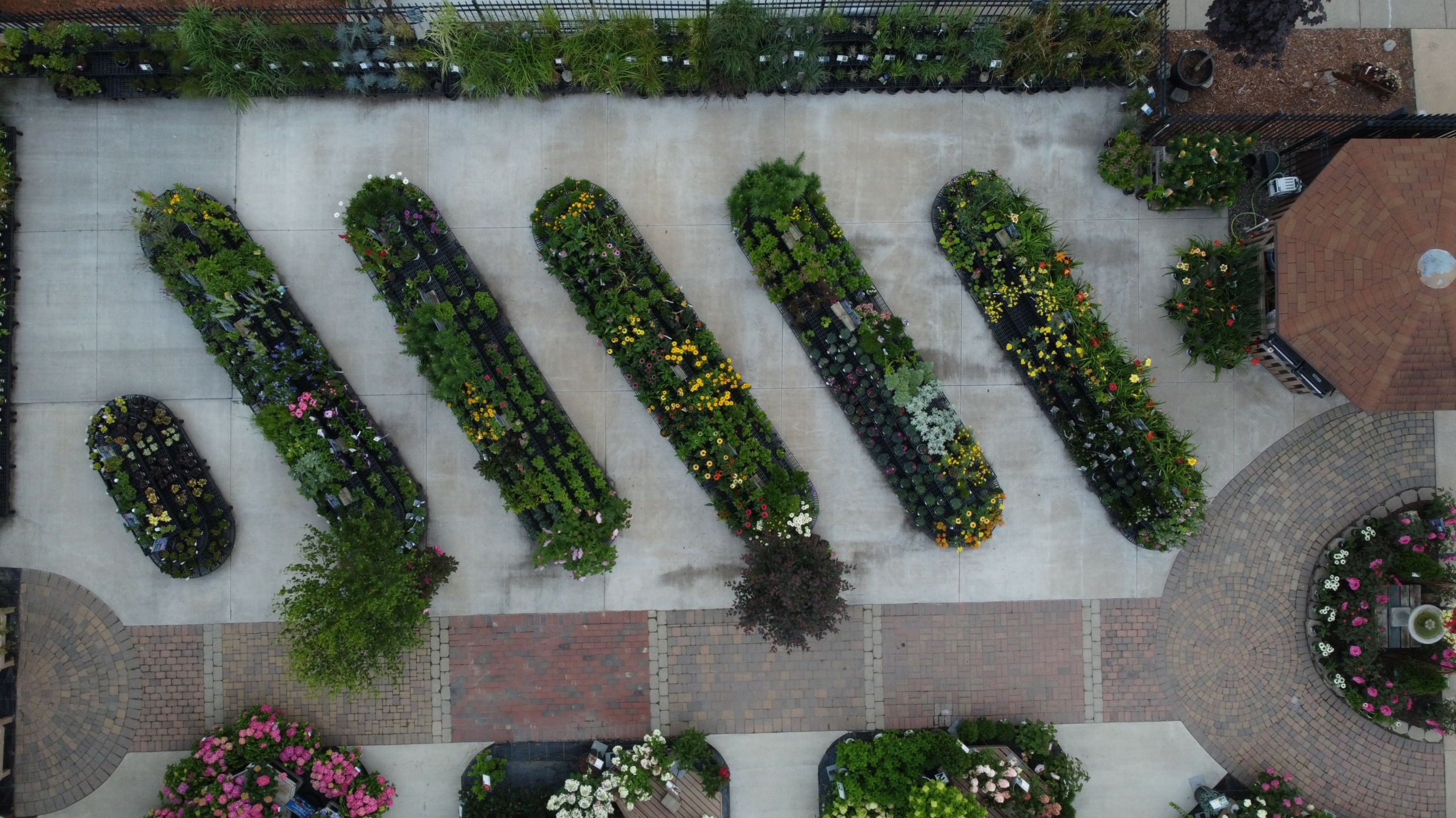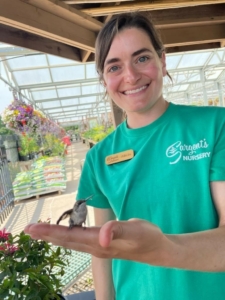
There is no better way to spend a nice summer day than taking a moment to enjoy the beauty all around us. Flowers are blooming and bees are buzzing. It’s a great time to visit a local botanical garden, shop at a nursery, or just wander around your own neighborhood. As you wander about and see all the beautiful gardens you might think, “I wish I had that at my house.” If you find yourself coveting your neighbor’s garden, then it’s time to take action and start your own perennial garden!
This article is all about beginning perennial gardening with tips on what to consider when starting your own beautiful perennial garden! Perennial plants are a great option for the beginner gardener. Many perennials require minimal maintenance and have many environmental benefits. These hardy little plants can improve soil health and reduce erosion while simultaneously helping to retain moisture and nutrients in their longer root systems.
Perennials are the gift that keeps giving. Perennials are defined by the fact that they live more than two years and come back on their own in the spring, while annual plants only live for one growing season and will not come back year after year. These plants are going to be different for each area of the country, so check the plant’s ZONE before purchasing to make sure you’re buying something that works for your area. Here in Red Wing, Minnesota, we are Zone 4 and just slightly north of us is Zone 5. See this map to determine your Zone.
There are a few important things to consider when you are planting perennials:
- Soil: Most soil in this area is a clay-like consistency, sandy or somewhere in between. It’s always a good idea to get your soil tested through the University of MN. Amending your soil based on your plants nutritional needs will make a big difference.
- Water: It’s very important to make sure your new plantings get enough water so they can establish strong roots. When you first plant them, they should be watered every other day for the first week then you can cut back to 2-3 times a week. This can change based on rainfall, and if the weather is cooler, you can water a bit less.
- Sun: Choosing the right plant for your space is half the battle. Some plants will thrive in full sun (at least 6 hours of direct sunlight) while others will need more shade. Set yourself up for success by making sure you’re providing an appropriate environment for your new perennial plants.

Establish your Goals; Temper your Expectations
The staff at Sargent’s nursery are happy to help you find the perfect perennials for your yard, but it can be very helpful to do some research ahead of time. Think about your garden goals and what is important to you. Height? Color? Pollinators? Cut flowers? You can find endless information online about what will work best in your space and pictures for ideas and inspiration. Our Plantfinder tool can help you create a list of plants that have carried this season. That doesn’t mean we have those plants currently in stock, but it’s a helpful way to start and bringing in your list of plants is a good way to help communicate your interests to staff.
If your goal is to create a perennial garden from scratch with a variety of new plants, one important thing to consider is proper landscape layering. This means using a variety of plants with different heights and textures to create a visually appealing space. Put taller plants in the back and shorter ones in the front. When shopping for new plants, always check the informational tag or ask a staff member how tall and wide a plant will be at its mature size. It can be tempting to fill a new space will lots of plants to make it look full right away, but you might end up with an unruly jungle once the plants reach their mature size. This will inhibit the individual plant’s ability to thrive and eventually result some casualties, which is no fun for anyone.
Speaking of casualties, it’s important to remember that sometimes plants die. You think you are doing everything right and you still end up with a poor little plant that doesn’t make it. Do not get discouraged. Use it as a learning opportunity to reevaluate your methods and try something else. Success in one area of your yard does not always guarantee the same success elsewhere. Consider the basics again: soil, water and sun; and don’t give up!

Popular Perennial Recommendations
If you are looking for some great tried-and-true perennials that many people seem to have success with in this climate, here are some recommendations. These plants are some of the most popular because they are relatively easy to grow and care for:
Peony
These beauties bloom spring to summer and do best if they are planted in the fall. They like a nice sunny spot, getting 6-8 hours of direct sun per day. Peonies make great cut flowers and are famous for their fragrant blooms.
Monarda
Otherwise known as Bee Balm, Monarda is a very popular choice for gardeners who like to cater to pollinators. They like moisture retentive soil and require full sun. Monarda blooms mid-late summer and are known for their uniquely shaped flower.
Phlox
There are two different common types of phlox: upright and creeping. The upright variety is similar to the native woodland version seen growing in ditches in late spring and fall while the creeping phlox is used as a groundcover. Both versions prefer full sun but will tolerate some shade, especially the upright variety.
Hosta
Probably one of the most well-known perennials- a classic. Do you have a lot of shade in your yard? Problem solved. Even though these plants will produce a flower, they are known for their foliage. Hostas like the shade and an average amount of water- usually only needed during dry spells. They are quite durable and are easily divided after 3-4 years.
Lilly
There are many different types of lilies but all of them require full sun and well-drained soil. Lilies are grown from bulbs and require minimal care if planted correctly. Lilies also make great cut flowers because of their dramatic beauty and fragrance. They do require some dead heading to encourage new blooms. Plant multiple varieties for blooms all season long!
Iris
These dramatic blooms are likely to be a showstopper in your garden. Like lilies, these perennials are grown from bulbs and vary in size and flower type. Irises also require full sun and loose well-drained soil. Irises also require some dead heading. Pollinators and humans alike love this hardy plant.
With great gardens comes great responsibility. A little effort goes a long way to ensure that your perennial plants are happy and healthy. Some fertilizer in the spring, dead heading in the summer (sometimes), and winter preparation in the fall are crucial. Remember to do your research and ask for advice along the way. With a little time and effort, you too can have the garden you’ve always wanted. So, let’s get some dirt under those fingernails and get growing!

This blog post is brought to you by Alicia, an employee of Sargent’s Nursery, whom you may have seen watering annuals in the greenhouse in the past.
She now travels the country, excitedly sharing her knowledge and experiences in gardening with you. And hey, she even saved a hummingbird once with a sticky wing.
Check back for more from Alicia and come along for the ride!


